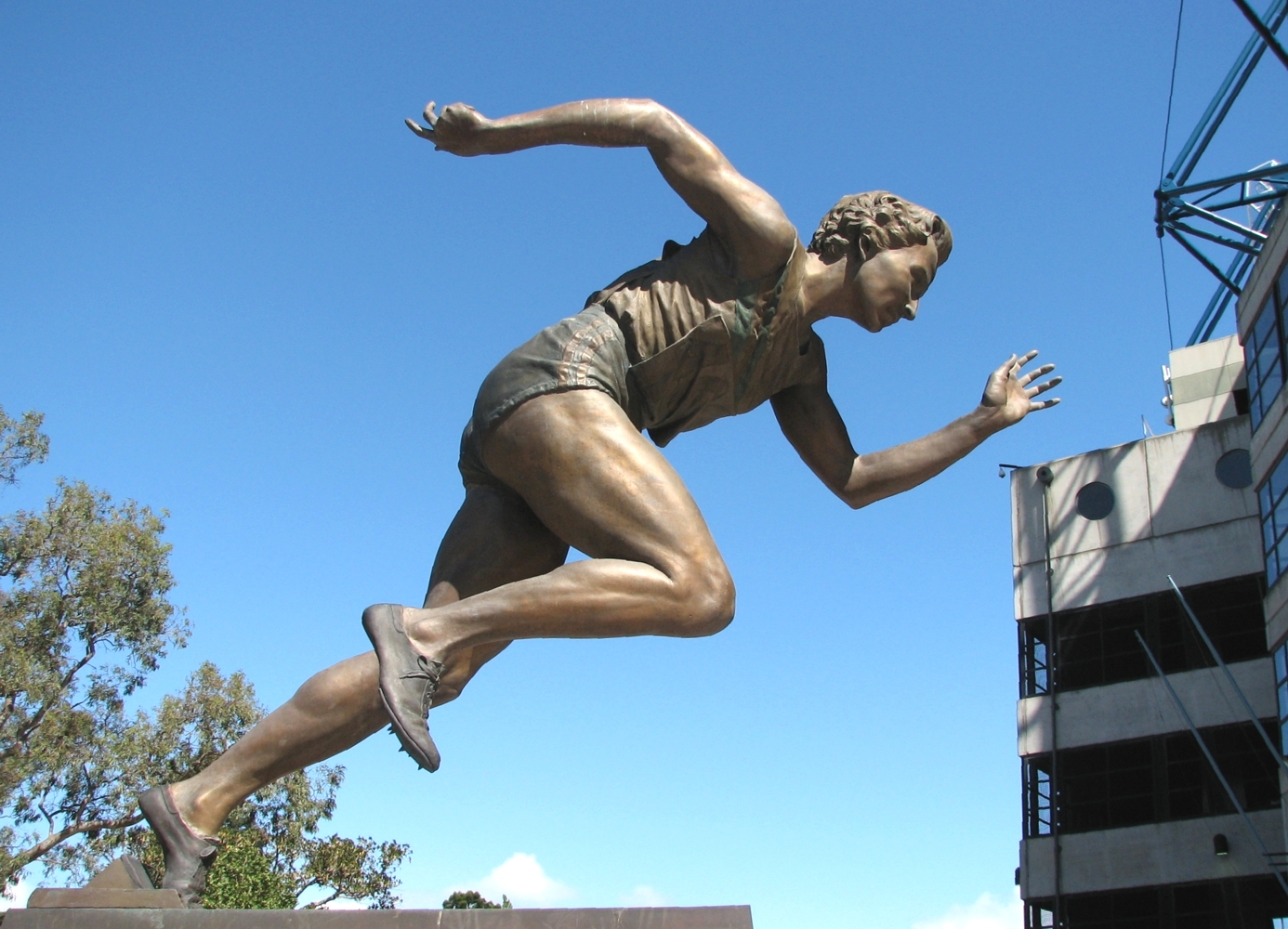
Usain Bolt won the Olympic gold medal by running 23 miles per hour. How close to the human limit is that?
Runners push down on the ground with each step and that force propels them forward. A greater force against the ground equates to greater speed. Until recently, scientists thought that running speed depended entirely on this strike force. Elite sprinters can strike the ground with up to 1000 pounds of force at every step. This was thought to be the human limit. However, a new study by Peter Weyand of Southern Methodist University and his colleagues calls that into question.
Weyand and his team used a specialized treadmill that could go over forty miles per hour while making precise measurements of the foot forces on the running surface. Male and female runners were tested running at their top speeds forward, backward, and hopping on one foot.
The researchers found that the runners were striking the ground with considerably more force while hopping. This is not to say that the gold medal sprinters at the London games in 2012 will be hopping across the finish line. But clearly, humans are capable of much greater foot forces than was previously suspected. In other words, the amount of force applied to the running surface is not the limiting factor after all.
Instead, the researchers found that it’s the speed of the foot strike that is biologically limiting. This was corroborated by the fact that the foot-ground contact time was essentially identical for runners going forward or backward. The human top speed for ground contact appears to be less than a tenth of a second.
Matthew Bundle, an assistant professor at the University of Wyoming and one of the authors on the paper, said:
Our simple projections indicate that muscle contractile speeds that would allow for maximal or near-maximal forces would permit running speeds of 35 to 40 miles per hour and conceivably faster.
No comments:
Post a Comment